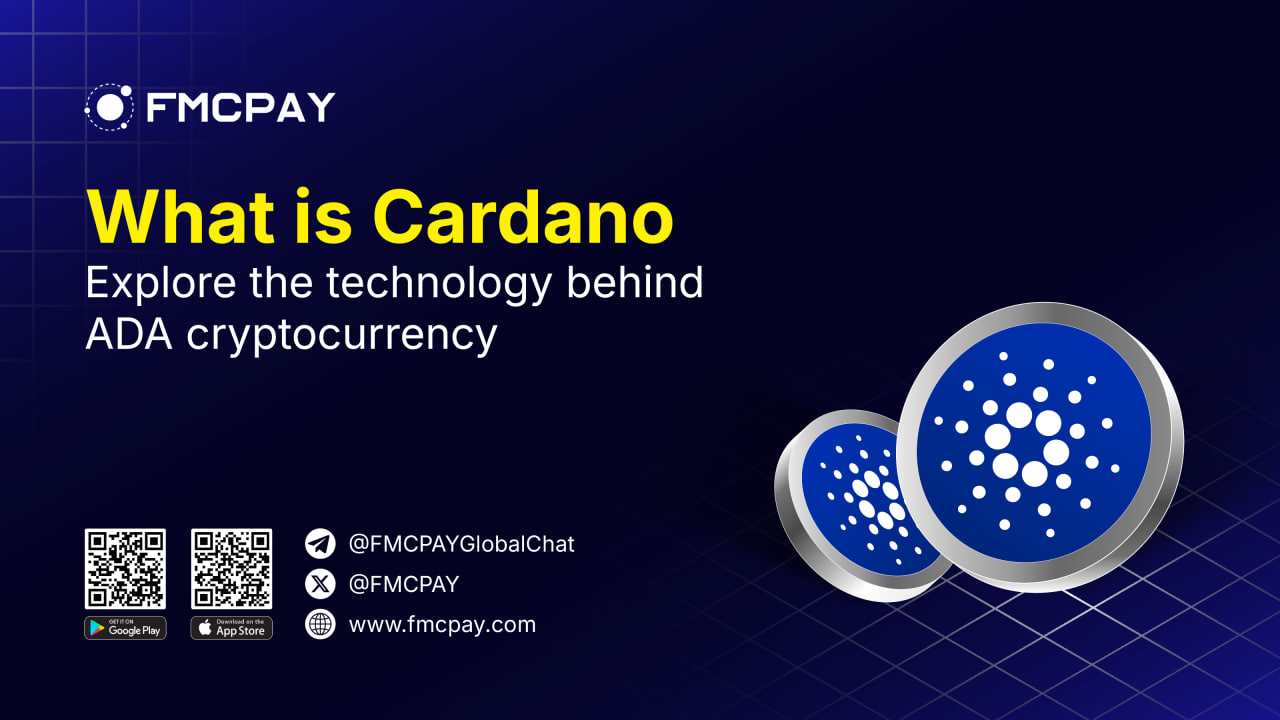The cryptocurrency world is constantly evolving, with innovative projects seeking to redefine blockchain technology. One such project that has captured attention is Cardano, along with its native cryptocurrency ADA. But what is Cardano, and how does its technology set it apart from its major competitor, Ethereum? Let’s join FMCPAY to dive into the details.
1. What is Cardano (ADA)?
It’s a decentralized blockchain platform that operates on a Proof-of-Stake (PoS) consensus mechanism, positioning itself as the next evolutionary step beyond the famous Ethereum blockchain.
Like Ethereum, Cardano uses its PoS system to reward participants for validating and adding new blocks to the blockchain. This system provides a sustainable and scalable foundation for executing smart contracts, facilitating the creation of decentralized finance applications, tokens, gamefi, and more.
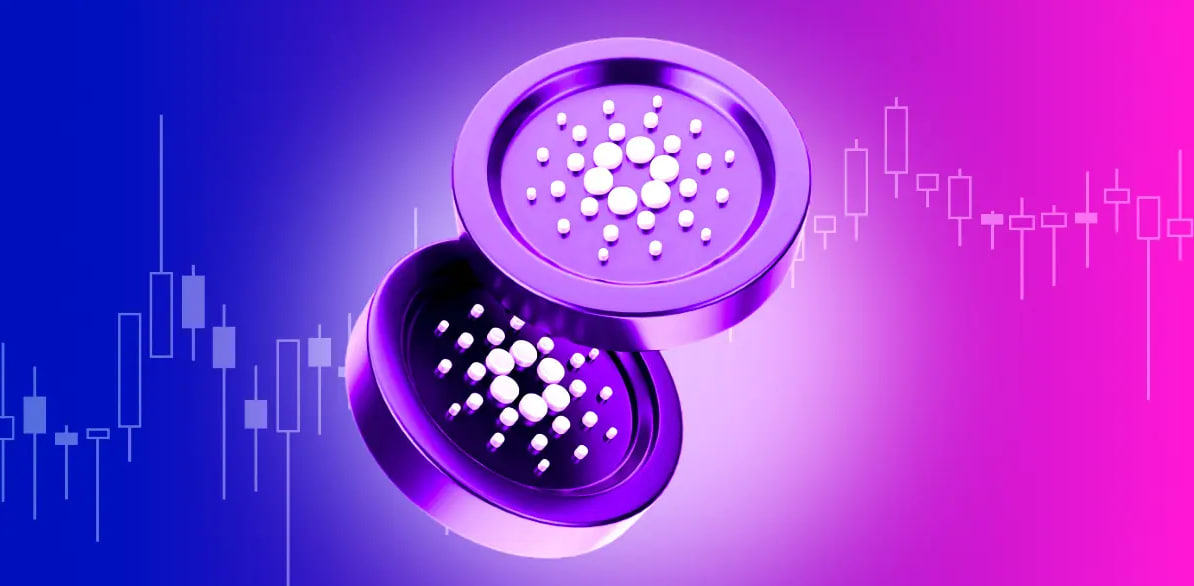
So what is Cardano’s broader role? Over the years, Cardano has matured into a robust ecosystem for decentralized applications (dApps), offering diverse functionalities managed by its community of stakers. Its native token, ADA, is named after Augusta Ada King (Countess of Lovelace) who is celebrated as the world’s first computer programmer. ADA can be purchased on many leading cryptocurrency exchanges like Binance or FMCPAY.
2. History of Cardano Blockchain
Cardano was founded by Charles Hoskinson, one of Ethereum’s co-founders. After parting ways with Ethereum, Hoskinson envisioned a blockchain platform that could overcome the challenges faced by earlier projects. In 2015, IOHK (Input Output Hong Kong) was established to develop the Cardano blockchain, with its first version launching two years later.
What is Cardano’s role in the blockchain landscape? It brands itself as an upgraded and more advanced alternative to Ethereum, referring to itself as a “third-generation” blockchain, while Ethereum is described as a “second-generation” platform. Cardano also aims to provide financial services to the world’s unbanked populations.
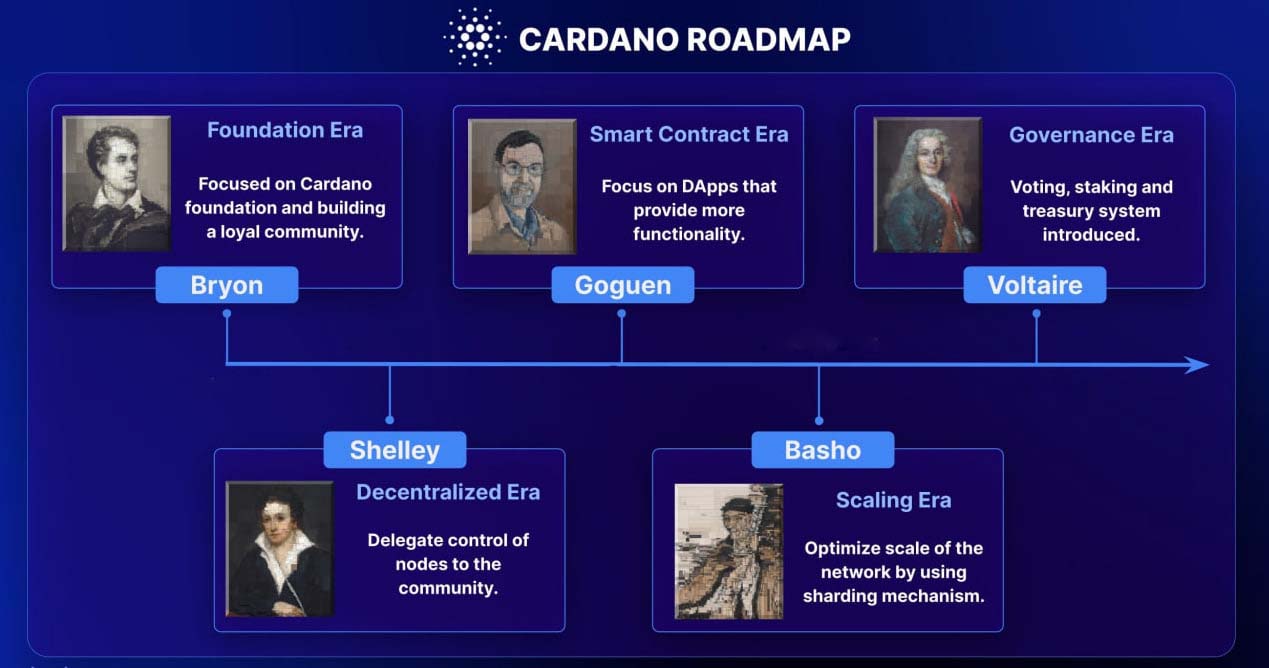
Cardano’s development roadmap is divided into five stages: Byron (foundation), Shelley (decentralization), Goguen (smart contracts), Basho (scaling), and Voltaire (governance). Each phase introduces new capabilities, ensuring continuous evolution.
Over the years, Cardano has experienced four significant upgrades or “hard forks”:
- The Shelley update marked Cardano’s shift from a federated Byzantine Fault Tolerance (fBFT) system to a more decentralized Proof-of-Stake (PoS) consensus mechanism known as Ouroboros.
- The Alonzo hard fork introduced smart contract capabilities, enabling developers to build decentralized applications (dApps) on the platform.
- The Vasil brought scalability enhancements, improving transaction speeds, block sizes, and scripting capabilities to support advanced dApp development.
- Lastly, the Valentine update further expanded Cardano’s functionality, introducing cross-chain compatibility and support for other blockchain protocols, reinforcing its commitment to advancing blockchain technology.
Among them, the Alonzo upgrade in 2021 was a significant milestone in Cardano’s history. This development allowed Cardano to support decentralized applications (dApps) and compete with platforms like Ethereum. So what is Cardano’s current focus? It’s on scaling and governance, promising a more decentralized and efficient ecosystem.
3. Technologies Behind Cardano
Cardano’s innovative technologies are designed to address the key challenges of scalability, sustainability, and security in blockchain. Here’s a closer look at the foundational technologies behind this platform.
3.1. Layered Architecture
Cardano’s architecture and technology set it apart from other blockchain platforms. At its core, it operates on a layered structure, separating the settlement and computation processes.
- Cardano Settlement Layer (CSL): This layer is responsible for handling ADA transactions. It ensures quick and secure transfers while maintaining simplicity. By isolating this function, Cardano prevents congestion in the network and enhances transaction speed.
- Cardano Computation Layer (CCL): This layer enables the execution of smart contracts and decentralized applications (dApps). It is designed for flexibility, allowing developers to implement changes or upgrades without disrupting the ADA transaction layer. This modular design ensures the network remains scalable and adaptable over time.
- KMZ Sidechains: this is another standout innovation from Cardano, derived from the research of Kiayias, Miller, and Zindros (KMZ). These sidechains use PoW for secure cross-chain transactions, enabling funds to move effortlessly from CSL to any other CCL or supported blockchain. Despite their potential to simplify complexity, KMZ Sidechains are still in development and not yet fully implemented.
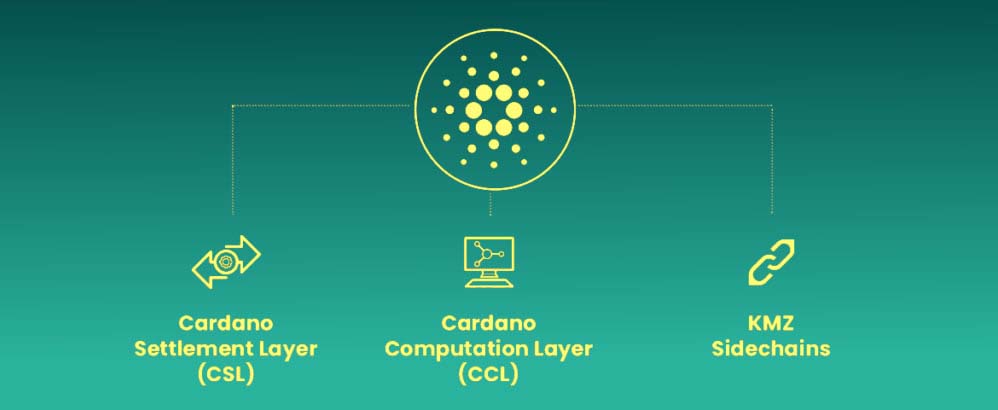
3.2. Ouroboros: A Unique Consensus Mechanism
What is Cardano’s secret to energy efficiency? It’s the Ouroboros protocol, a groundbreaking PoS consensus mechanism. Unlike Bitcoin’s energy-intensive PoW system, Ouroboros relies on ADA holders who stake their tokens to participate in network security and transaction validation. This approach is not only eco-friendly but also ensures robust security through its mathematically verified protocol.
3.3. Developer Tools: Plutus and Marlowe
Cardano offers advanced tools to empower developers:
- Plutus: A programming platform that allows developers to create smart contracts with high security and precision.
- Marlowe: A specialized tool designed for building financial contracts, making it easier for individuals without programming expertise to utilize blockchain technology.
3.4. Decentralization and Governance
Cardano’s network is highly decentralized, with thousands of independent stake pools contributing to its security. Furthermore, its governance system enables ADA holders to vote on protocol changes and funding decisions, ensuring a democratic and community-driven evolution.
By combining these technologies, Cardano positions itself as a blockchain platform ready to tackle real-world challenges. So, what is Cardano’s role in shaping the future of blockchain? It’s to create a secure, sustainable, and scalable infrastructure for decentralized solutions.
4. Cardano vs. Ethereum
Cardano and Ethereum are two of the most prominent blockchain platforms, both supporting smart contracts and decentralized applications (dApps). However, their approaches to technology and development differ significantly, setting them apart in the cryptocurrency landscape.
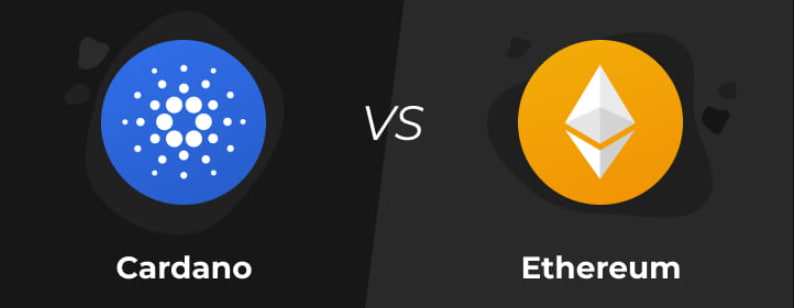
Consensus Mechanisms
One of the main differences lies in how the two networks achieve consensus. Ethereum originally used the PoW system but transitioned to PoS in 2022 with its Ethereum 2.0 upgrade. So what is Cardano’s unique edge here? It has utilized PoS from the very beginning through its Ouroboros protocol. This not only makes Cardano more energy-efficient but also aligns with its focus on sustainability.
Development Philosophy
Ethereum’s development is fast-paced and driven by its community, allowing for rapid innovation. However, this approach can sometimes result in challenges with network upgrades and security vulnerabilities. In contrast, Cardano’s development follows a rigorous, research-first methodology. Every update and protocol improvement is peer-reviewed by academics, ensuring that the platform’s foundations are scientifically robust.
Smart Contracts
Ethereum has long been the leader in smart contract adoption, with a well-established ecosystem supporting thousands of dApps. Cardano introduced smart contract functionality more recently with the Goguen phase of its roadmap. While it’s still catching up in terms of adoption, Cardano’s Plutus programming platform ensures that its smart contracts are more secure and less prone to errors.
Scalability and Architecture
Cardano’s layered architecture provides a distinct advantage in scalability compared to Ethereum’s monolithic structure. By separating the settlement layer (for transactions) from the computation layer (for smart contracts), Cardano can process transactions more efficiently. This design also allows for future upgrades without disrupting the entire network. Meanwhile, Ethereum’s scalability solutions, such as sharding, are still in development.
Community and Adoption
Ethereum boasts a massive and active developer community, which has contributed to its widespread adoption. Cardano, while newer, is steadily building its ecosystem, focusing on quality over quantity. Its emphasis on fostering long-term solutions rather than quick fixes sets it apart in the competitive blockchain space.
So, what is Cardano’s unique position in this rivalry? While Ethereum excels in market dominance and ecosystem maturity, Cardano shines with its scientific rigor and energy-efficient model. Its focus on long-term sustainability and rigorous research could give it a significant advantage in the future.
5. Challenges and Criticisms of Cardano
Despite its innovative approach, Cardano faces several challenges and criticisms. One major concern is its slower pace of development compared to competitors like Ethereum. Critics argue that while Cardano emphasizes thorough research and testing before implementation, this can lead to delays in delivering features that users expect.
Additionally, some users have expressed frustration with the complexity of staking mechanisms within the Cardano ecosystem. While staking offers rewards for participation in network security, it may be daunting for newcomers who are unfamiliar with cryptocurrency concepts.
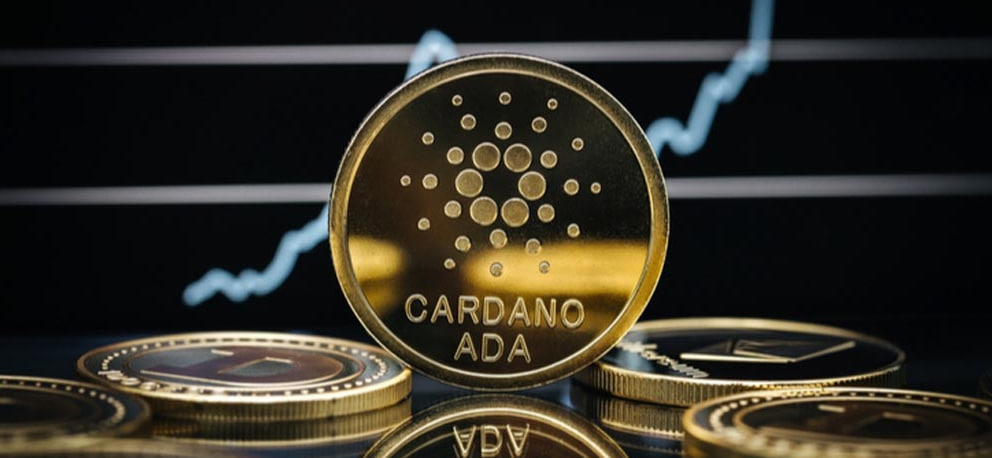
Moreover, as with any blockchain platform, scalability remains an ongoing issue as user demand increases. Although Cardano’s Ouroboros protocol is designed to address scalability concerns effectively, real-world performance under high transaction volumes will be crucial in validating these claims.
So what is Cardano’s greatest challenge? Some view it as overly ambitious, with goals that may take years to fully materialize. Skeptics question whether it can deliver on its promises within a competitive market. However, by addressing these issues, Cardano could solidify its position as a leading blockchain platform.
6. How to Buy ADA on FMCPAY?
Now you understand what is Cardano. If you’re interested in holding this promising cryptocurrency, you can easily purchase it on leading exchanges like Binance or FMCPAY. Buying ADA on FMCPAY is simple and hassle-free even for beginners. Here’s a step-by-step guide:
- Create an Account: Sign up on FMCPAY.com by providing your email address and setting up a secure password.
- Verify Your Identity: Complete KYC identity verification processes required by FMCPAY.
- Deposit Funds: Add funds to your account using your preferred payment method.
- Buy ADA: Navigate to the trading section on the FMCPAY exchange and select the ADA/USDT from the list of available trading pairs.
- Complete Your Purchase: Enter the amount you wish to purchase and confirm your transaction.
FMCPAY makes it easy for users to access ADA and join the Cardano ecosystem. What is Cardano’s role in your crypto portfolio? With its strong fundamentals, you can hold your ADA in a private wallet or utilize it within the FMCPAY platform for transactions or staking.
Conclusion
In summary, understanding what is Cardano involves recognizing its unique position as a scalable and sustainable ecosystem. Its layered architecture facilitates flexibility in developing decentralized applications while emphasizing security through rigorous academic research.
As interest in cryptocurrencies continues to grow globally, platforms like Cardano are poised to play pivotal roles in shaping how digital assets are utilized across various sectors. With ongoing developments and community engagement driving future innovations within its ecosystem, Cardano remains an exciting project worth following closely.
For detailed news and the latest trends in the cryptocurrency space, stay tuned to FMCPAY for more updates and crypto insights!

